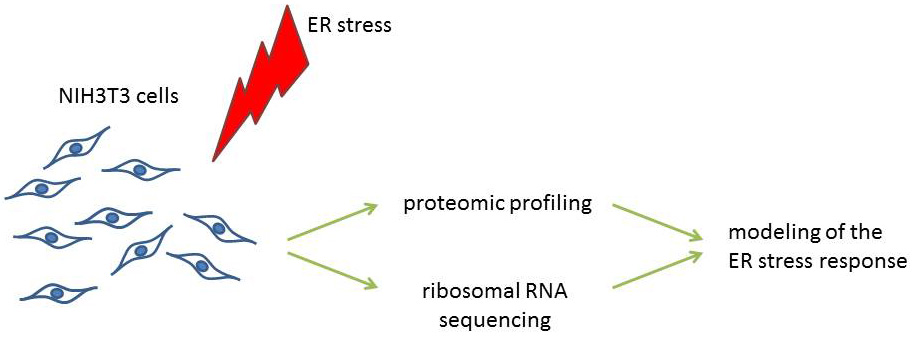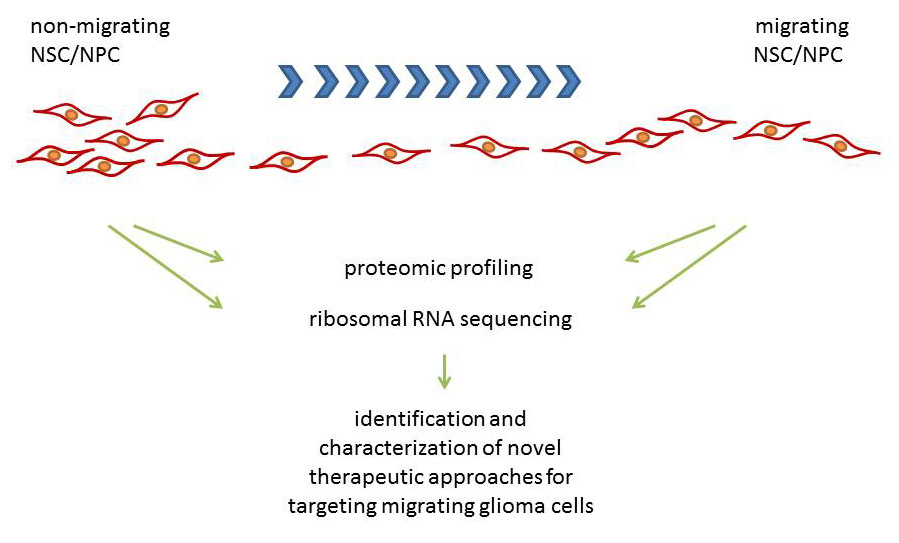SP 4
Towards understanding the UPR in infiltrating glioma cells
Diffuse human gliomas are graded according to the WHO classification into WHO grade II, III or IV depending on their histological characteristics, with the grade IV tumor being the most malignant diffuse glioma, the glioblastoma multiforme with a median survival of around one year. One of the major therapeutic challenges in the therapy of diffuse gliomas is their inherently diffuse growth within the brain. While the tumor bulk is often surgically accessible and the resection area can adjuvantly be treated using radiation therapy, the tumor cells, which have already diffusely infiltrated into the adjacent brain are not accessible to these therapeutic approaches.
Genetically, the vast majority of diffuse gliomas of WHO grades II and III carry mutations in IDH1 and about half of these tumors harbor mutations in the TP53 gene. In contrast, primary glioblastomas show a different mutation profile with either mutations in the PTEN gene and/or amplification with or without activating mutation of the EGFR gene besides mutations in other genes encoding proteins involved in the activation of the Pi3K/PKB signaling pathway.

NIH3T3 cells will be exposed to different ER stress stimuli. Proteins as well as ribosomally bound RNA will be extracted and analyses using mass spectrometry and RNA sequencing, respectively. Following these high throughput approaches a bioinformatic model of the UPR will be established. ER stress - endoplasmatic reticulum stress.
The identification of novel therapies specifically targeting the infiltrating tumor cells in the context of their genetic alterations will be invaluable. One molecular mechanism which we are particularly interested in in this context is the Unfolded Protein Response (UPR) which occurs upon the induction of endoplasmatic reticulum (ER) stress. The UPR is a cellular stress response pathway that can for example be elicited upon increased loads of protein synthesis due to changes in cellular behaviour such as migration. Our project aims at a better understanding on how migrating glial precursor and infiltrating glioma cells are distinct from non-migrating glial precursor and infiltrating glioma cells especially also with respect to the UPR and how these properties can be exploited to therapeutically target infiltrating glioma cells outside of the bulk tumor.

Non-migrating and migrating neural stem and precursor cells (NSC/NPC) will be analyzed on the protein level using mass spectrometry as well ribosomal RNA profiling. For these experiments NSC/NPC cultures with different glioma-relevant mutations and their corresponding controls will be used (IDH1 mutation, TP53 mutation, PTEN mutation).
Keywords: neural stem and progenitor cells, NSC, NPC, diffuse glioma, IDH1 mutation, TP53 mutation, PTEN mutation, ribosomal profiling, migration, NIH3T3 cells, unfolded protein response - UPR, endoplasmatic, endoplasmic reticulum, ER stress



